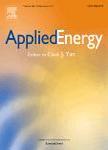版权所有:内蒙古大学图书馆 技术提供:维普资讯• 智图
内蒙古自治区呼和浩特市赛罕区大学西街235号 邮编: 010021

作者机构:Nanjing Univ Informat Sci & Technol Sch Management Sci & Engn Nanjing 210044 Jiangsu Peoples R China Missouri Univ Sci & Technol Kummer Inst Ctr Artificial Intelligence & Autonomous Syst Rolla MO 65409 USA Missouri Univ Sci & Technol Dept Elect & Comp Engn Rolla MO 65409 USA
出 版 物:《APPLIED ENERGY》 (Appl. Energy)
年 卷 期:2025年第383卷
核心收录:
学科分类:0820[工学-石油与天然气工程] 0817[工学-化学工程与技术] 08[工学] 0807[工学-动力工程及工程热物理]
基 金:National Natural Science Foundation of China [72471124, 72071112] U.S. Department of Energy's Office of Energy Efficiency and Renewable Energy (EERE) under the Water Power Technologies Office [DE-EE0008781] National Science Foundation Intelligent Systems Center Mary Finley Missouri Endowment at Missouri University of Science and Technology Kummer Institute Center for Artificial Intelligence and Autonomous Systems
主 题:Energy storage Pumped storage hydropower Renewable energy sources Economic dispatch State of charge Dynamic programming Discontinuous constraints Optimization
摘 要:The increasing integration of renewable energy sources like wind and solar poses significant challenges to secure and stable grid operation. Energy storage systems, particularly pumped storage hydro (PSH), play a crucial role in balancing power supply and demand. Traditional analytical studies of PSH economic dispatch problems often assume zero lower bounds for generating and pumping rates to simplify analysis and derive analytical solutions for multi-period optimization problems. However, the inherent mechanical design constraints of PSH require non-zero minimum flow rates for efficient operation. We analyze two scenarios, merchants having PSH only and merchants having both PSH and wind farms. In the PSH-only scenario, four analytically determined State of Charge (SOC) reference points divide the SOC range into five sub-regions, each corresponding to a specific optimal decision. In the co-optimized PSH and wind farms scenario, five SOC reference points split the SOC range into six sub-regions. By simply comparing the current SOC with these reference points in the next period, users can derive unique, analytically optimal economic dispatch decisions for each period. Our findings indicate that non-zero minimum capacity constraints significantly influence the optimal dispatch strategy, increasing the likelihood of PSH systems remaining idle and potentially reducing arbitrage profits. We validate our proposed approach using both synthesized data and real data from the Midcontinent Independent System Operator, demonstrating its practical applicability. This methodology represents a significant advancement in energy storage dispatch strategies by providing scalable, analytically optimal solutions for multi-period optimization problems, enhancing economic efficiency in the management of energy storage systems.